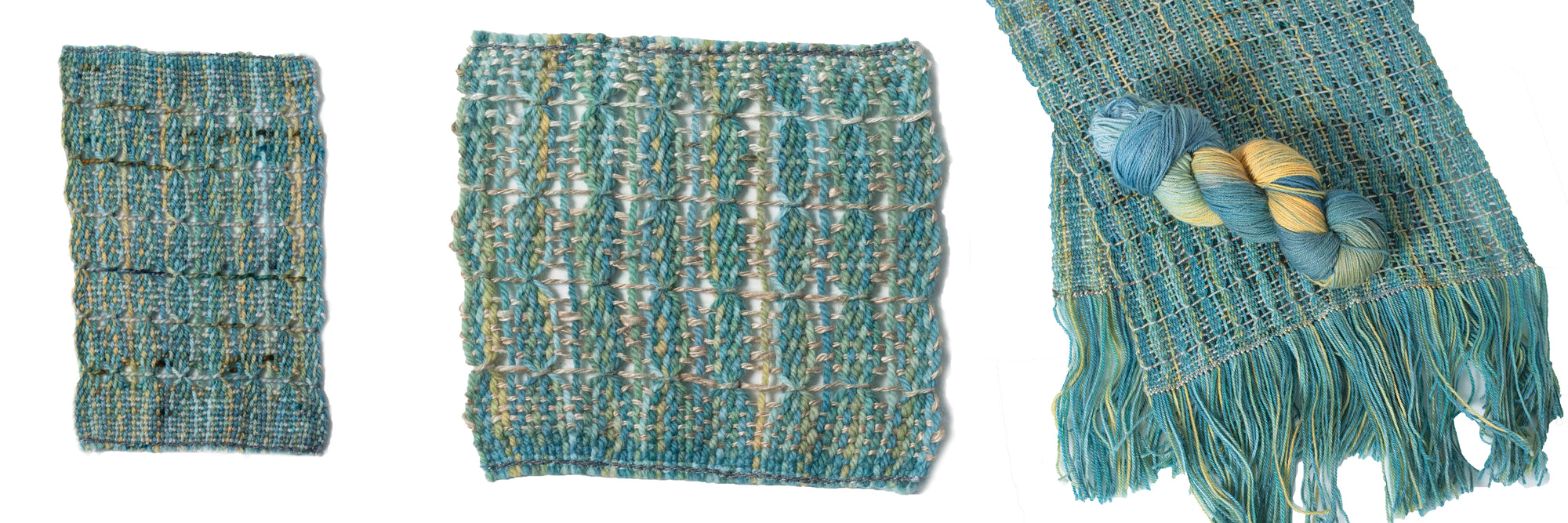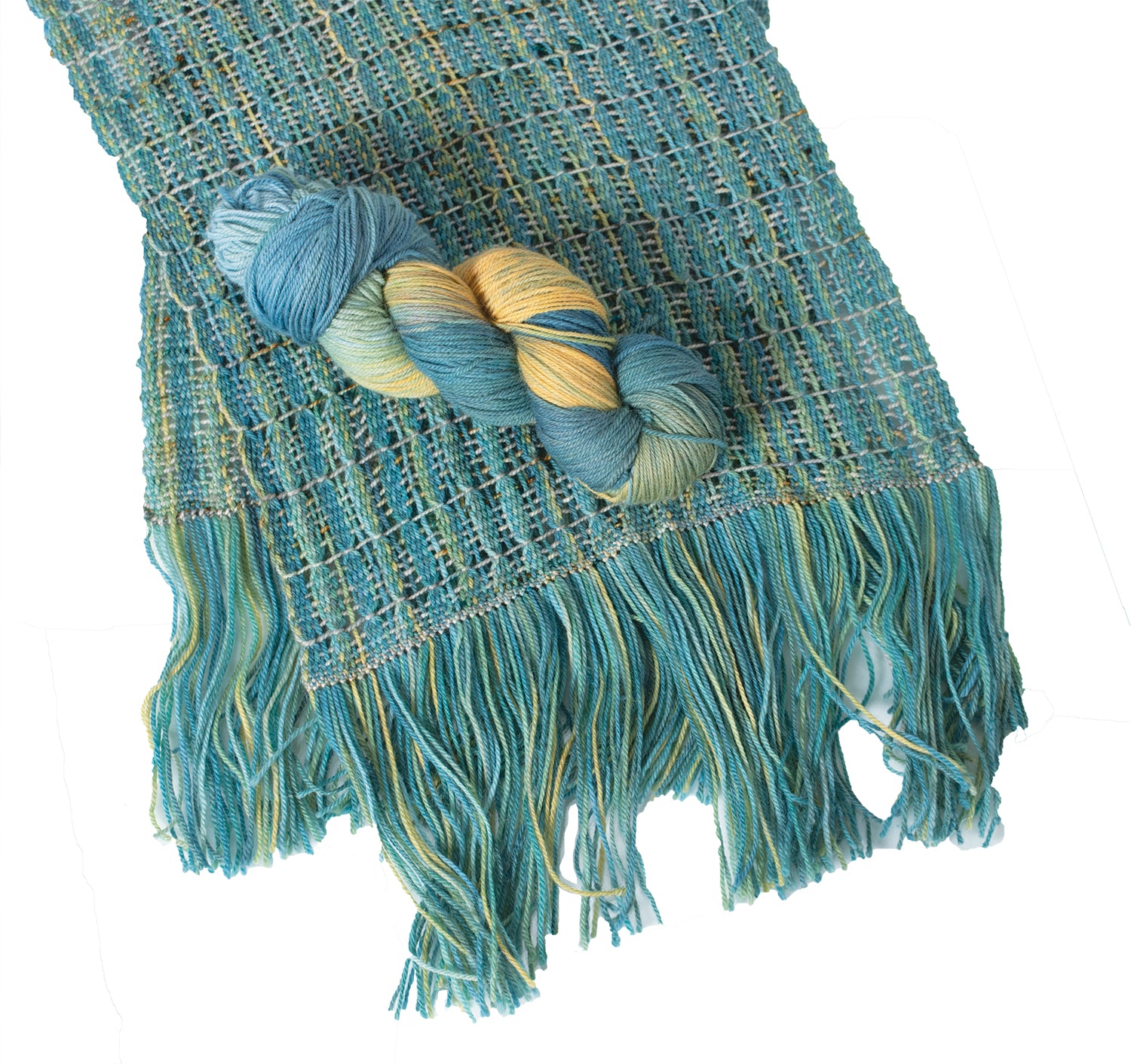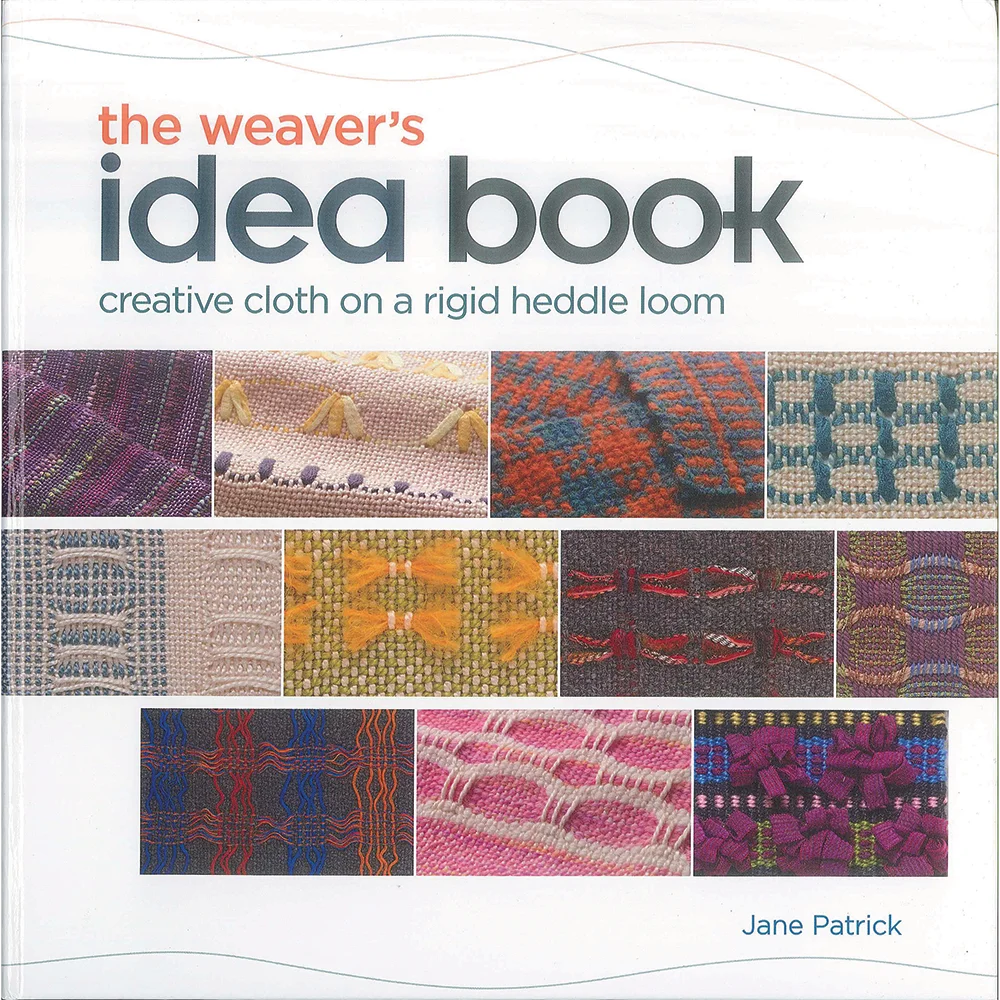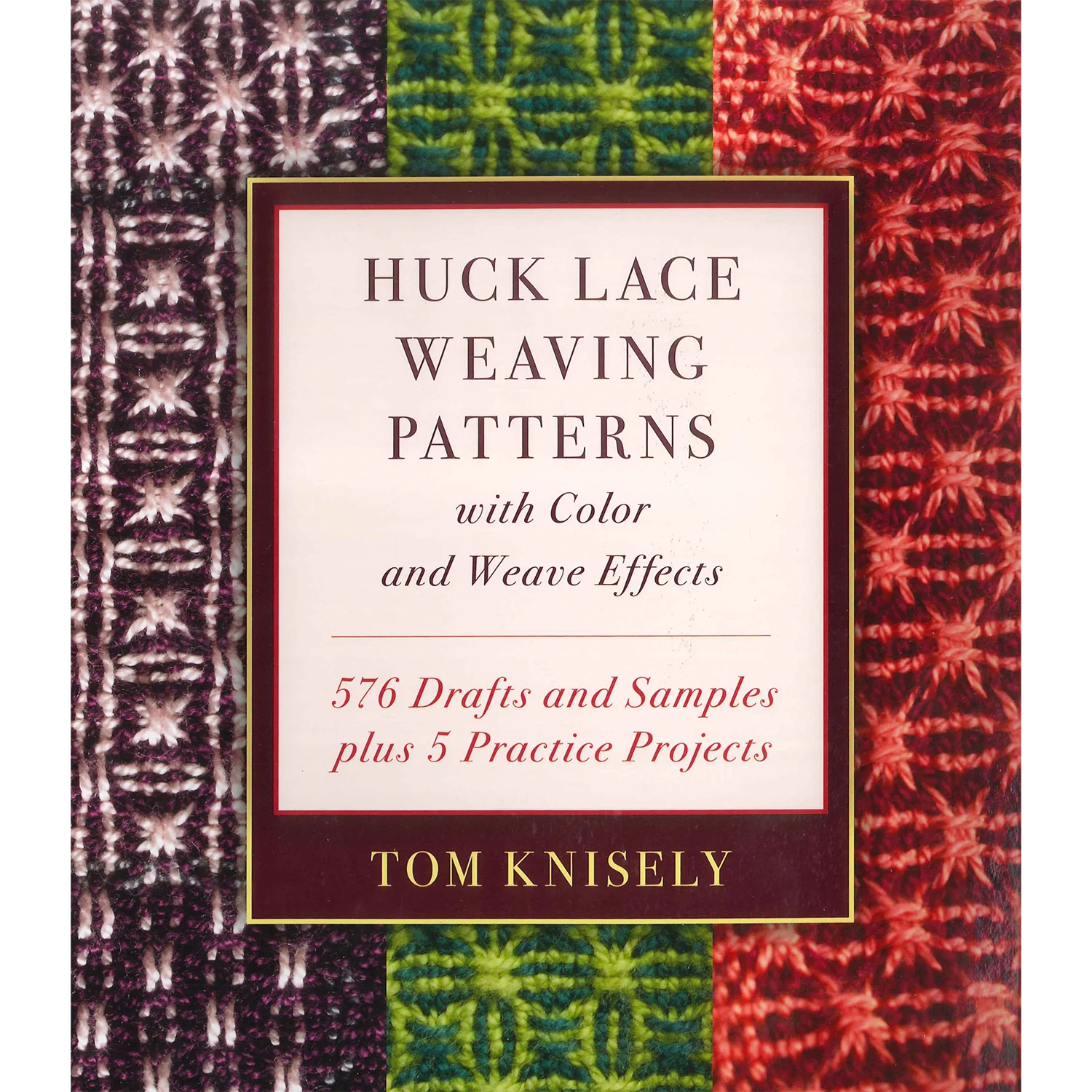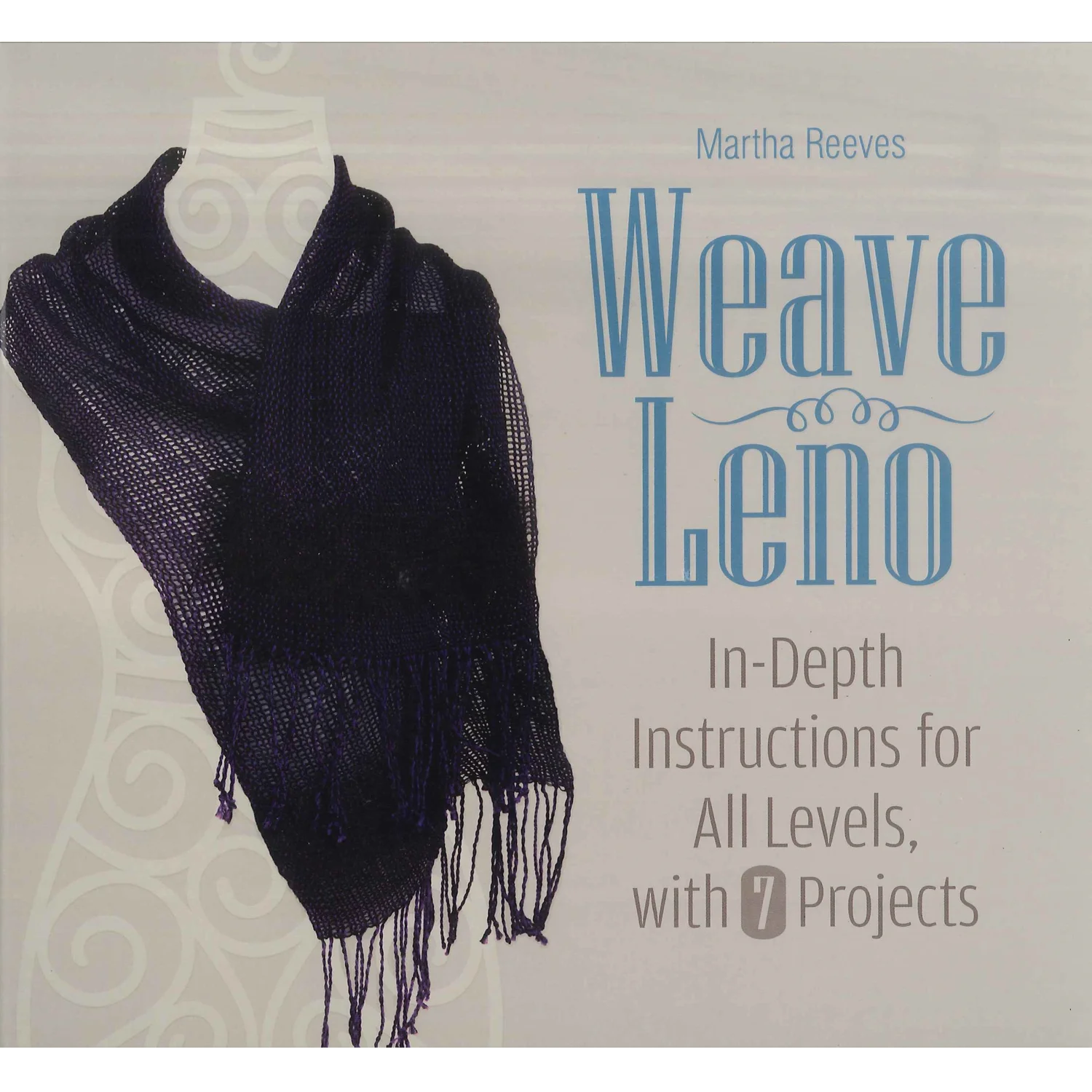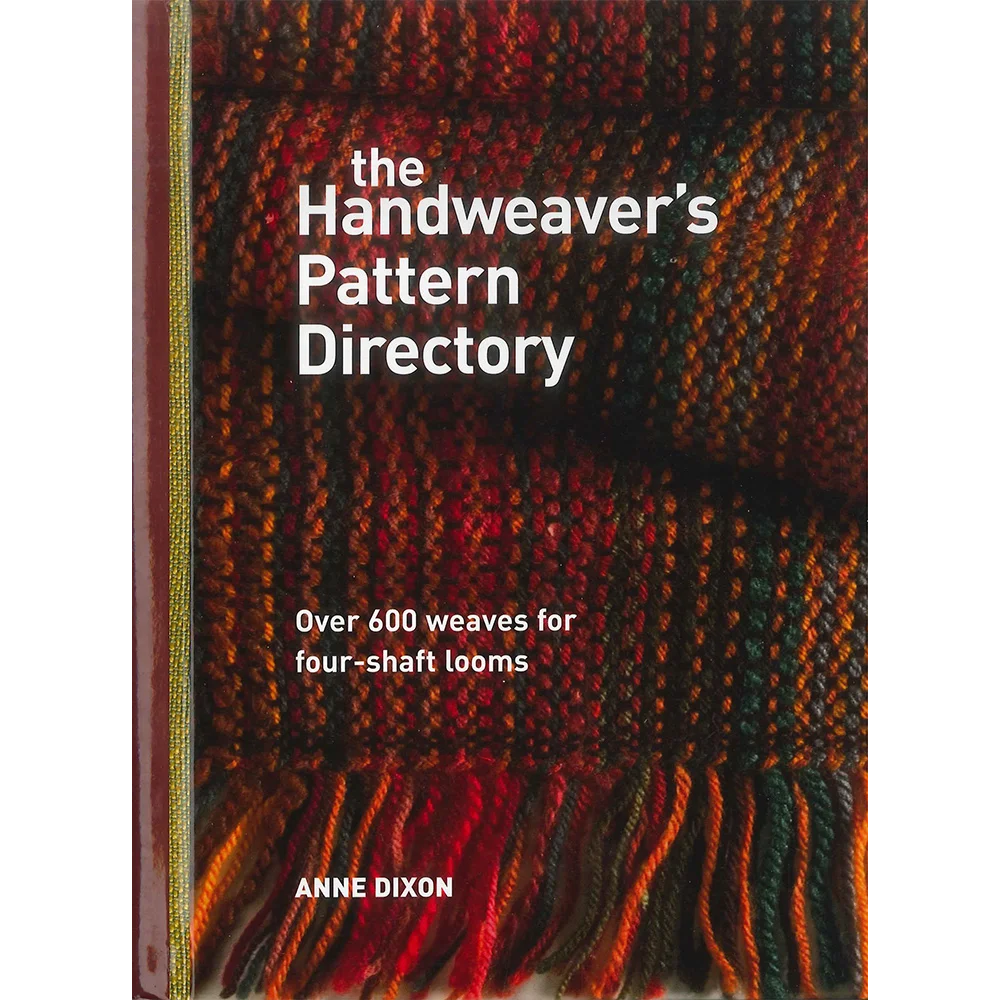Sampling for Structure and Weft
By Stephanie Flynn Sokolov
To design the Beachcomber Shawl, I played around with different weave structures and yarns. My goal was to find a yarn from my stash that complemented the Colorado River Ombré warp and produced a fabric with a supple hand in a visually pleasing structure.
What You'll Need
-
weft yarns for sampling
-
warped loom for sampling
Directions
The sampling began. My favorite weave structure was leno (Figure 1B), but it is extremely time-consuming and tedious to weave. After producing several more samples, I settled on evenly spaced Brooks Bouquet with 5 picks in each bouquet bundle.

For colors, I needed something similar in value to the warp. I placed some good candidates around the warp yarn, photographing in color and then adjusting it to black and white to narrow down the choices.
Next, I wove three samples with different wefts (Figure 2). First, I tried a taupe DK yarn called Bella Lino. I thought its lighter fibers could nicely offset the wool in the warp for a summer shawl. But the yarn was a little thicker than I wanted and the hand was a little too stiff.
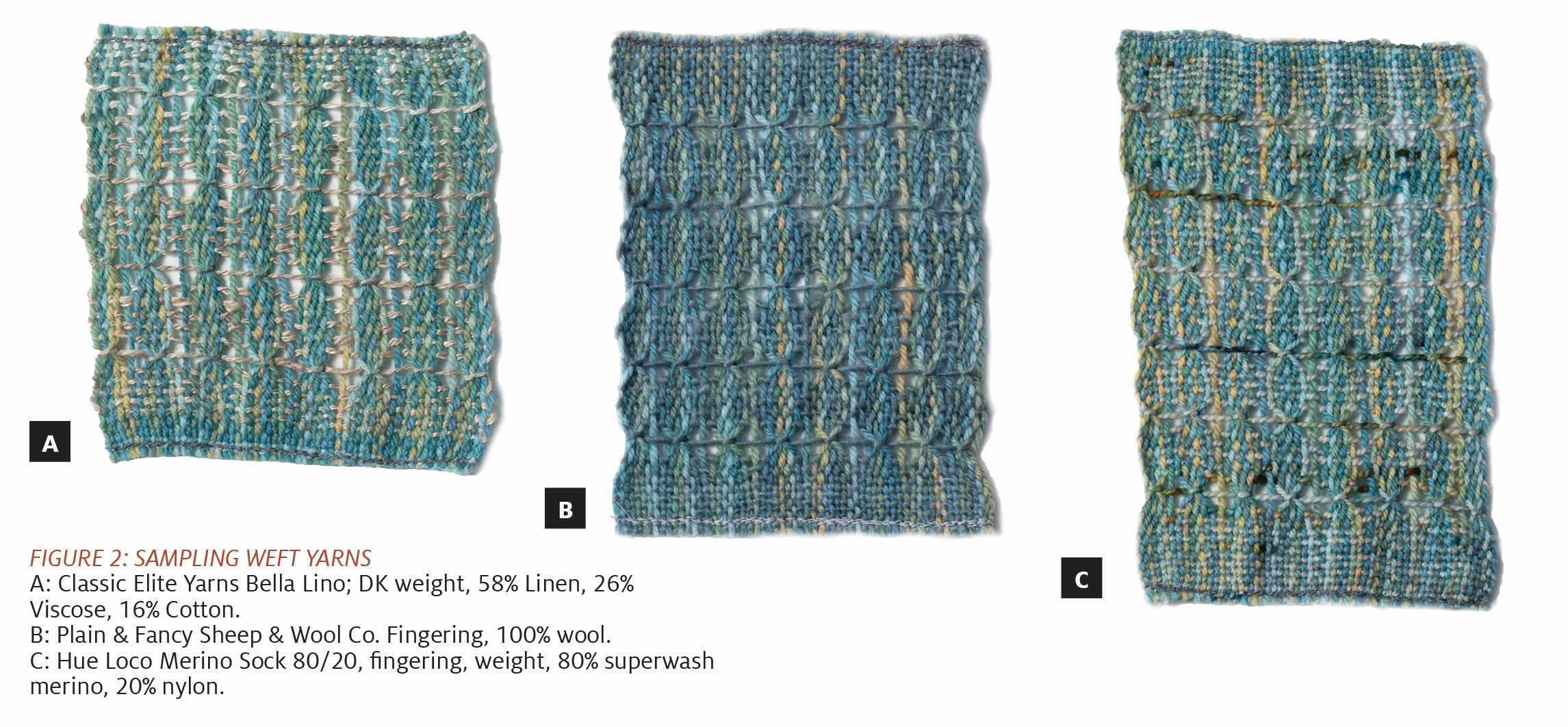
Then I found a blue-gray fingering yarn, very similar to Malabrigo Mechita, and wove a sample. This one looked great when I took it off the loom, but washing fulled the weft more than I expected and produced a much less fluid fabric.
Like Goldilocks, I tried again and this time the yarn was just right. A Hue Loco fingering yarn in my stash, space-dyed in blue-greens and golden browns, was a little lighter weight than the warp but matched the fiber content. When I was weaving, the picks seemed too far apart, but once I washed and lightly pressed the swatch, I had a wonderfully light and flowing fabric.
This is why designers sample—all the way through finishing.

